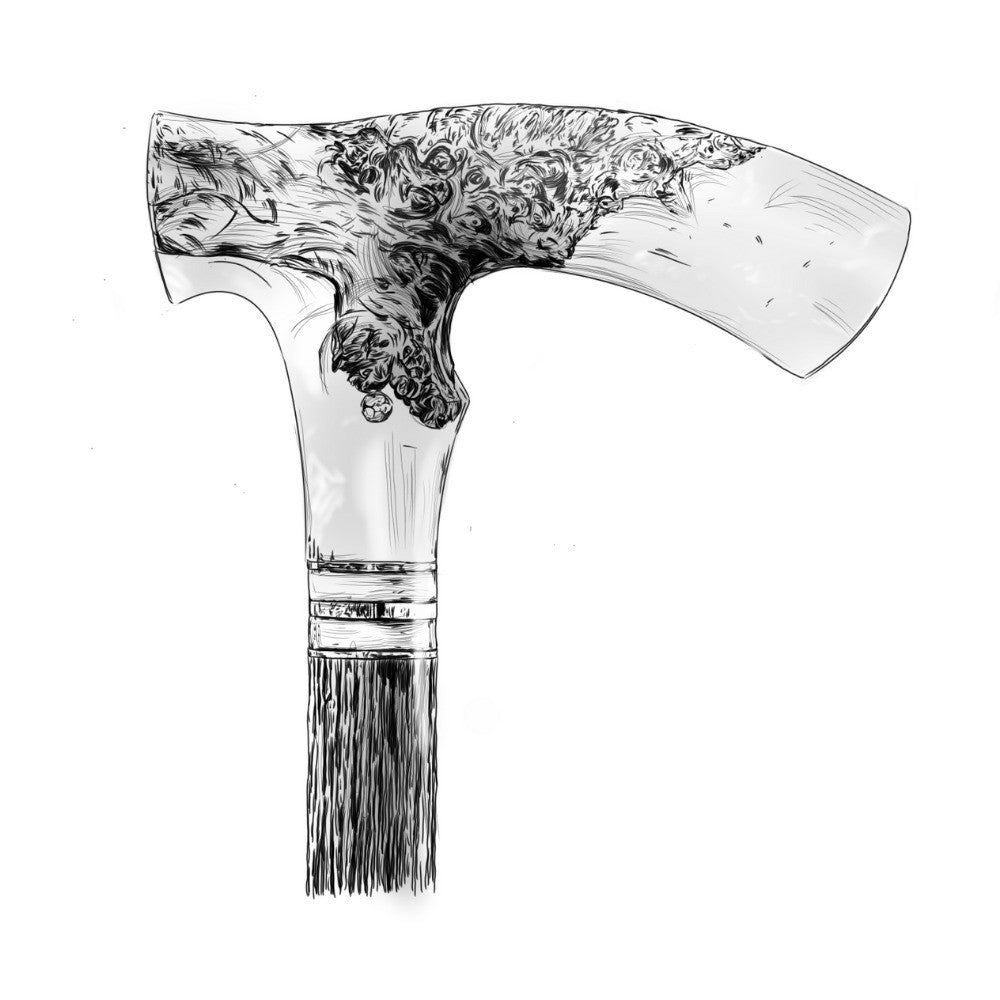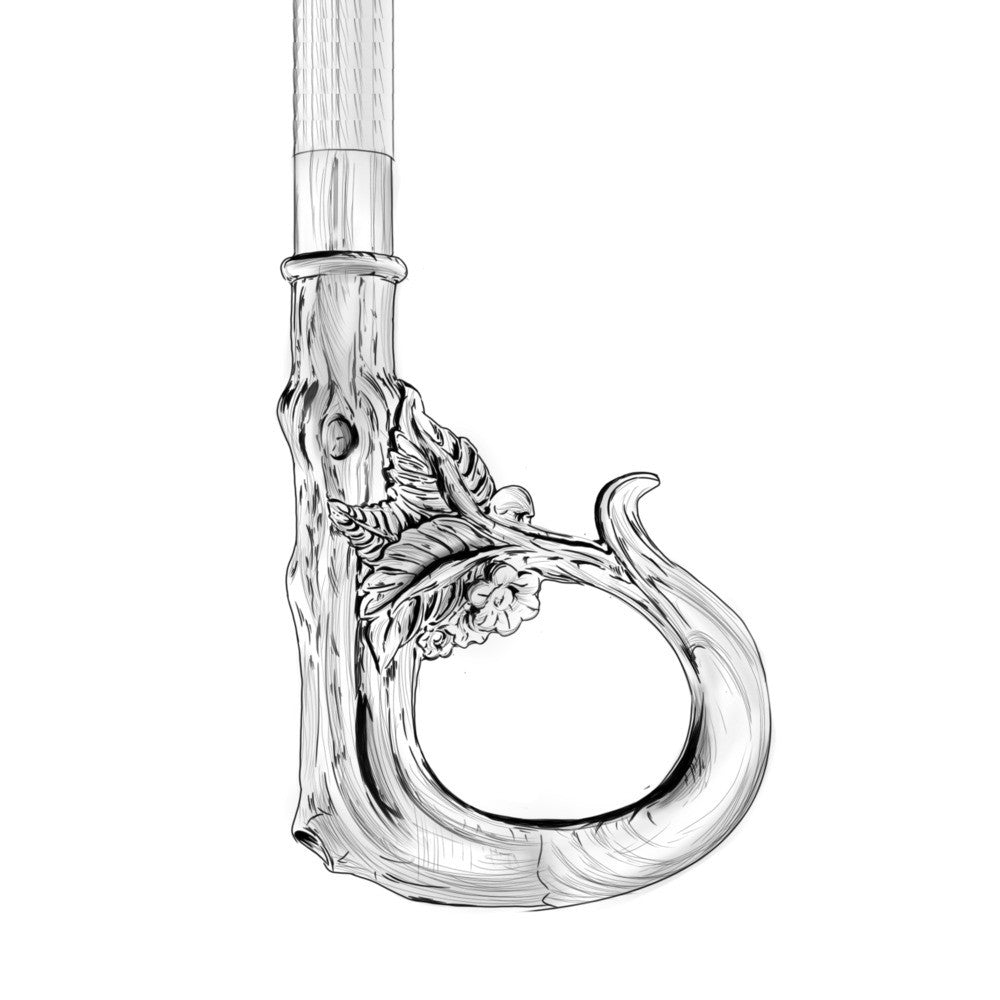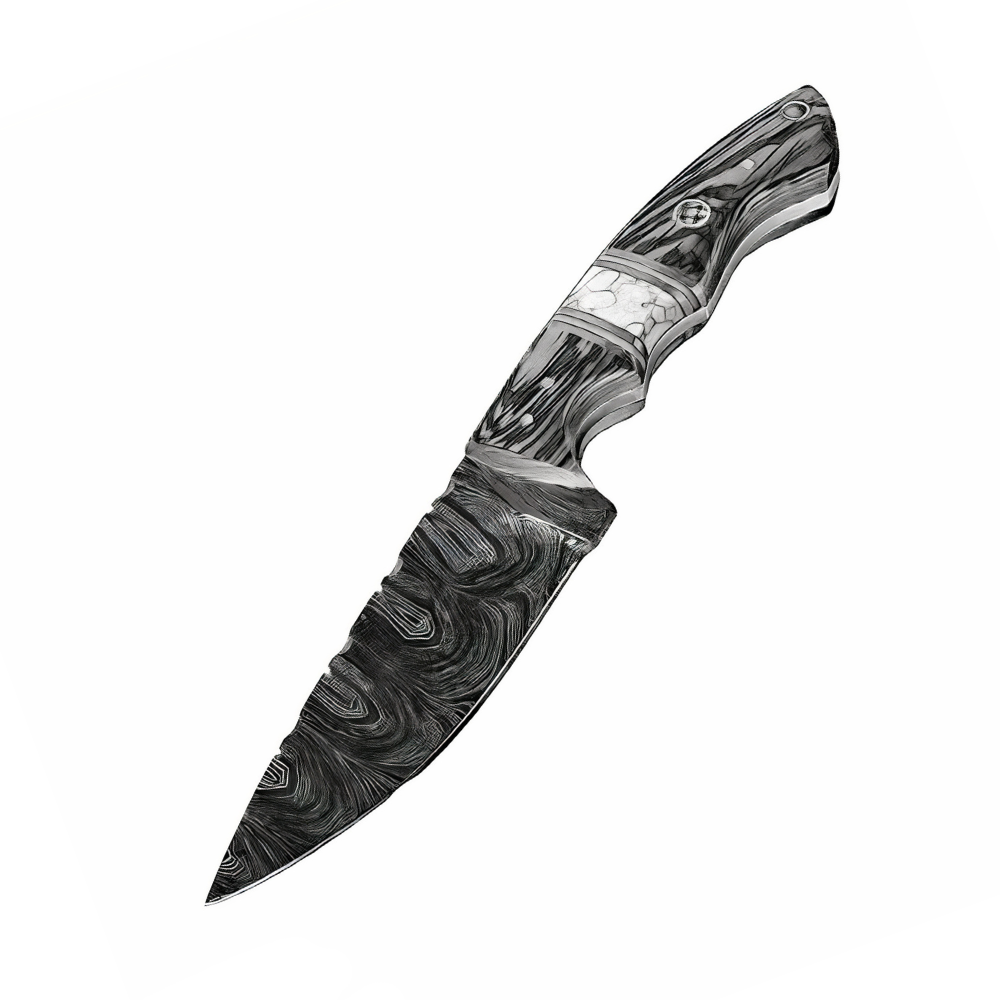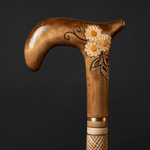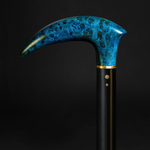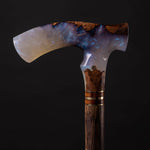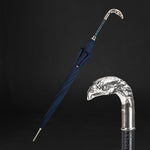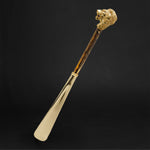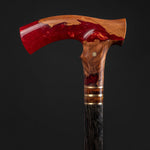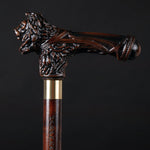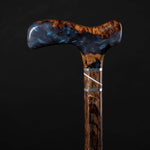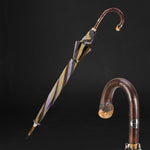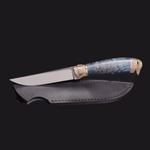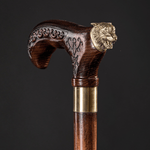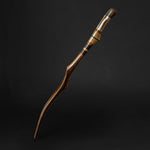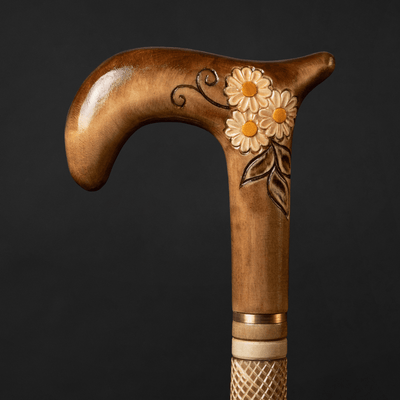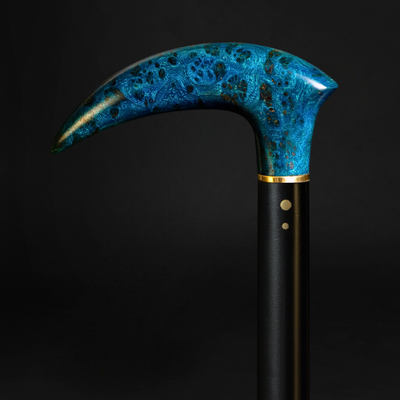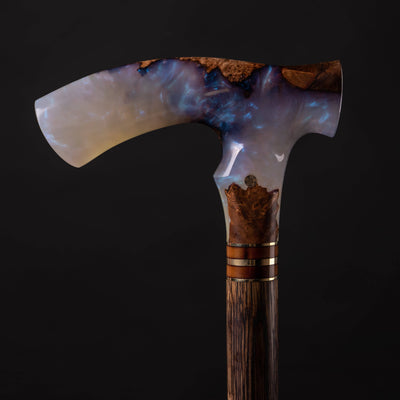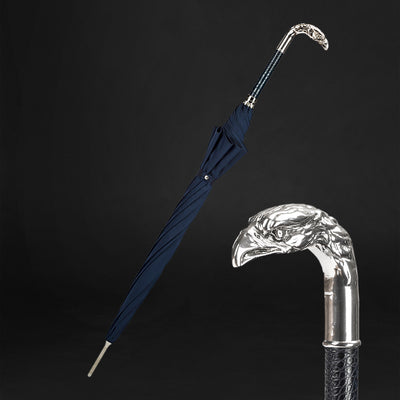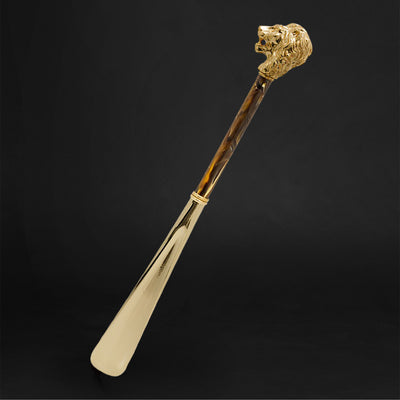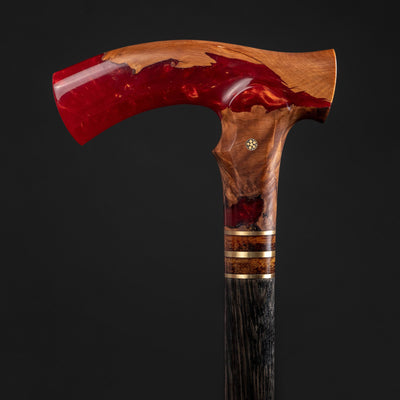You have no items in your shopping cart.
Recent Posts
-
The Art of Christmas Design: Walking Canes That Celebrate the Season in Style
-
How an Ergonomic Walking Cane Handle Prevents Hand and Wrist Strain?
-
How to Walk With a Cane Correctly to Avoid Back or Shoulder Strain?
-
5 Common Mistakes People Make When Buying a Walking Cane (and How to Avoid Them)
-
How to Choose a Walking Cane That Reflects Your Personality (Not Just Your Needs)?
-
Walking Canes That Match Formalwear for Weddings and Events
MOST POPULAR NOW
31
Aug

Walking stick can be not just a thing for stability or accessory. In this blog we want to share with you about sword walking cane.
Sword walking cane
A swordstick or cane-sword is a cane containing a hidden blade. The term is typically used to describe European weapons from around the 18th century, but similar devices have been used throughout history, notably the Roman dolon, the Japanese shikomizue and the Indian gupti.
The sword cane consists of two parts: the hollow cane and the inner blade which is attached to the handle. It was during the revolutionary period that the sword cane made its appearance.
The swordstick was a popular fashion accessory for the wealthy during the 18th and 19th centuries. During this period, it was becoming less socially acceptable to openly carry a sword, but there were still upper-class men routinely trained in swordsmanship who wished to go armed for self-defense. Swords concealed in ladies' walking sticks and parasols were also not unknown, as it was even less socially acceptable for a lady to carry a sword, or publicly admit that she knew how to use one.
Soon after their introduction, other "gadget canes" became popular. Instead of a blade, these would hold the tools of one's trade, compasses, and even flasks for keeping alcohol. There were special swordsticks that had guns installed in the hilt. But the use was unlikely.
Malacca wood was the most commonly used material in making the cane shafts, and the standard grip was rounded and metallic.Today, designer and collector canes have sterling silver handles, and are made with wooden shafts made from various woods, including Malacca and bamboo. Ornate designs, such as animal heads, skulls, and various emblems may also be carved into the wooden handles; these may make them harder to wield, but some find them more attractive. Sword canes are most often made with rapier-pointed blades.
The sword cane consists of two parts: the hollow cane and the inner blade which is attached to the handle. It was during the revolutionary period that the sword cane made its appearance.
The swordstick was a popular fashion accessory for the wealthy during the 18th and 19th centuries. During this period, it was becoming less socially acceptable to openly carry a sword, but there were still upper-class men routinely trained in swordsmanship who wished to go armed for self-defense. Swords concealed in ladies' walking sticks and parasols were also not unknown, as it was even less socially acceptable for a lady to carry a sword, or publicly admit that she knew how to use one.
Soon after their introduction, other "gadget canes" became popular. Instead of a blade, these would hold the tools of one's trade, compasses, and even flasks for keeping alcohol. There were special swordsticks that had guns installed in the hilt. But the use was unlikely.
Malacca wood was the most commonly used material in making the cane shafts, and the standard grip was rounded and metallic.Today, designer and collector canes have sterling silver handles, and are made with wooden shafts made from various woods, including Malacca and bamboo. Ornate designs, such as animal heads, skulls, and various emblems may also be carved into the wooden handles; these may make them harder to wield, but some find them more attractive. Sword canes are most often made with rapier-pointed blades.

The sword cane, a weapon seducing the artistic world Appreciated in the Belle Époque, the sword cane was used both as a clothing accessory and as a weapon. Made of wood, it was considered a noble and elegant object. It was also used by Arthur Rimbaud and was notably seen in the comic strip Tintin in America. According to the anecdote, the French poet had wounded the photographer Étienne Carjat with a sword cane after he had excluded him from a dinner of the Vilains Bonshommes. John Steed's favourite weapon in Bowler Hats and Leather Boots, it never leaves the famous British secret service agent. More recently, she was even seen in the hand of Dr. Watson in Guy Ritchie's Sherlock Holms saga.
A swordstick or cane-sword is a cane containing a hidden blade. The term is typically used to describe European weapons from around the 18th century, but similar devices have been used throughout history, notably the Roman dolon, the Japanese shikomizue and the Indian gupti.
The sword cane consists of two parts: the hollow cane and the inner blade which is attached to the handle. It was during the revolutionary period that the sword cane made its appearance.
The swordstick was a popular fashion accessory for the wealthy during the 18th and 19th centuries. During this period, it was becoming less socially acceptable to openly carry a sword, but there were still upper-class men routinely trained in swordsmanship who wished to go armed for self-defense. Swords concealed in ladies' walking sticks and parasols were also not unknown, as it was even less socially acceptable for a lady to carry a sword, or publicly admit that she knew how to use one.
Soon after their introduction, other "gadget canes" became popular. Instead of a blade, these would hold the tools of one's trade, compasses, and even flasks for keeping alcohol. There were special swordsticks that had guns installed in the hilt. But the use was unlikely.
Malacca wood was the most commonly used material in making the cane shafts, and the standard grip was rounded and metallic.Today, designer and collector canes have sterling silver handles, and are made with wooden shafts made from various woods, including Malacca and bamboo. Ornate designs, such as animal heads, skulls, and various emblems may also be carved into the wooden handles; these may make them harder to wield, but some find them more attractive. Sword canes are most often made with rapier-pointed blades.
The sword cane, a weapon seducing the artistic world Appreciated in the Belle Époque, the sword cane was used both as a clothing accessory and as a weapon. Made of wood, it was considered a noble and elegant object. It was also used by Arthur Rimbaud and was notably seen in the comic strip Tintin in America. According to the anecdote, the French poet had wounded the photographer Étienne Carjat with a sword cane after he had excluded him from a dinner of the Vilains Bonshommes. John Steed's favourite weapon in Bowler Hats and Leather Boots, it never leaves the famous British secret service agent. More recently, she was even seen in the hand of Dr. Watson in Guy Ritchie's Sherlock Holms saga.
The sword cane consists of two parts: the hollow cane and the inner blade which is attached to the handle. It was during the revolutionary period that the sword cane made its appearance.
The swordstick was a popular fashion accessory for the wealthy during the 18th and 19th centuries. During this period, it was becoming less socially acceptable to openly carry a sword, but there were still upper-class men routinely trained in swordsmanship who wished to go armed for self-defense. Swords concealed in ladies' walking sticks and parasols were also not unknown, as it was even less socially acceptable for a lady to carry a sword, or publicly admit that she knew how to use one.
Soon after their introduction, other "gadget canes" became popular. Instead of a blade, these would hold the tools of one's trade, compasses, and even flasks for keeping alcohol. There were special swordsticks that had guns installed in the hilt. But the use was unlikely.
Malacca wood was the most commonly used material in making the cane shafts, and the standard grip was rounded and metallic.Today, designer and collector canes have sterling silver handles, and are made with wooden shafts made from various woods, including Malacca and bamboo. Ornate designs, such as animal heads, skulls, and various emblems may also be carved into the wooden handles; these may make them harder to wield, but some find them more attractive. Sword canes are most often made with rapier-pointed blades.
The sword cane, a weapon seducing the artistic world Appreciated in the Belle Époque, the sword cane was used both as a clothing accessory and as a weapon. Made of wood, it was considered a noble and elegant object. It was also used by Arthur Rimbaud and was notably seen in the comic strip Tintin in America. According to the anecdote, the French poet had wounded the photographer Étienne Carjat with a sword cane after he had excluded him from a dinner of the Vilains Bonshommes. John Steed's favourite weapon in Bowler Hats and Leather Boots, it never leaves the famous British secret service agent. More recently, she was even seen in the hand of Dr. Watson in Guy Ritchie's Sherlock Holms saga.
Also Purchased
-
Beige Walking Cane for Ladies Chamomile Flower, Wooden Walking Stick
Introducing our beautiful Beige Walking Cane for Ladies with Chamomile Flower, a Wooden Walking Stick that is hand carved and handmade, making it both pretty and unique. This walking cane...$79.50 -
Exotic Burl Wood Walking Cane – Fashionable Artisan Stick
A sculptural statement in deep, oceanic blue — this walking cane is more than a support accessory, it's wearable art. Meticulously hand-shaped from stabilized burl wood, the handle evokes the...$425.00 -
ArtWalkingSticks™ MAGIC Walking Cane, Handmade - Make to Order
This piece of art is created for those who value details. We make one of a kind, handcrafted wood and resin canes. Our Wooden Canes are completely unmatched in creativity....$430.00 -
Umbrella with Eagle Handle, Fashion Umbrella For Men
Make a bold and fashionable statement with our Umbrella with Eagle Handle - a unique and functional accessory designed for men. The striking eagle handle is the highlight of this...$325.00 -
Fashionable Lion Shoehorn Long Handle, Pearly Brown Shaft, Handmade
Introducing our Fashionable Lion Shoehorn, a handcrafted, long-handled shoe horn with a pearly brown shaft that's both stylish and practical. The intricate Lion design adds a touch of elegance to...$240.00 -
ArtWalkingSticks™ MAGIC Red Walking Cane - Unisex, Handmade
This piece of art is created for those who value details. We make one of a kind, handcrafted wood and resin canes. Our Wooden Canes are completely unmatched in creativity....$425.00
